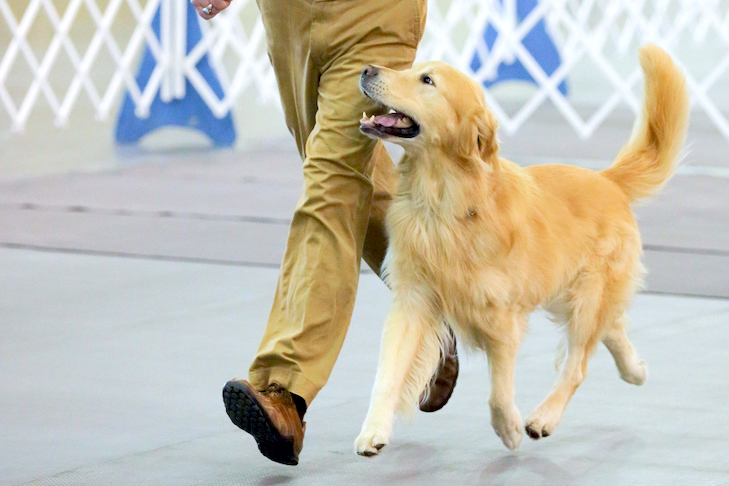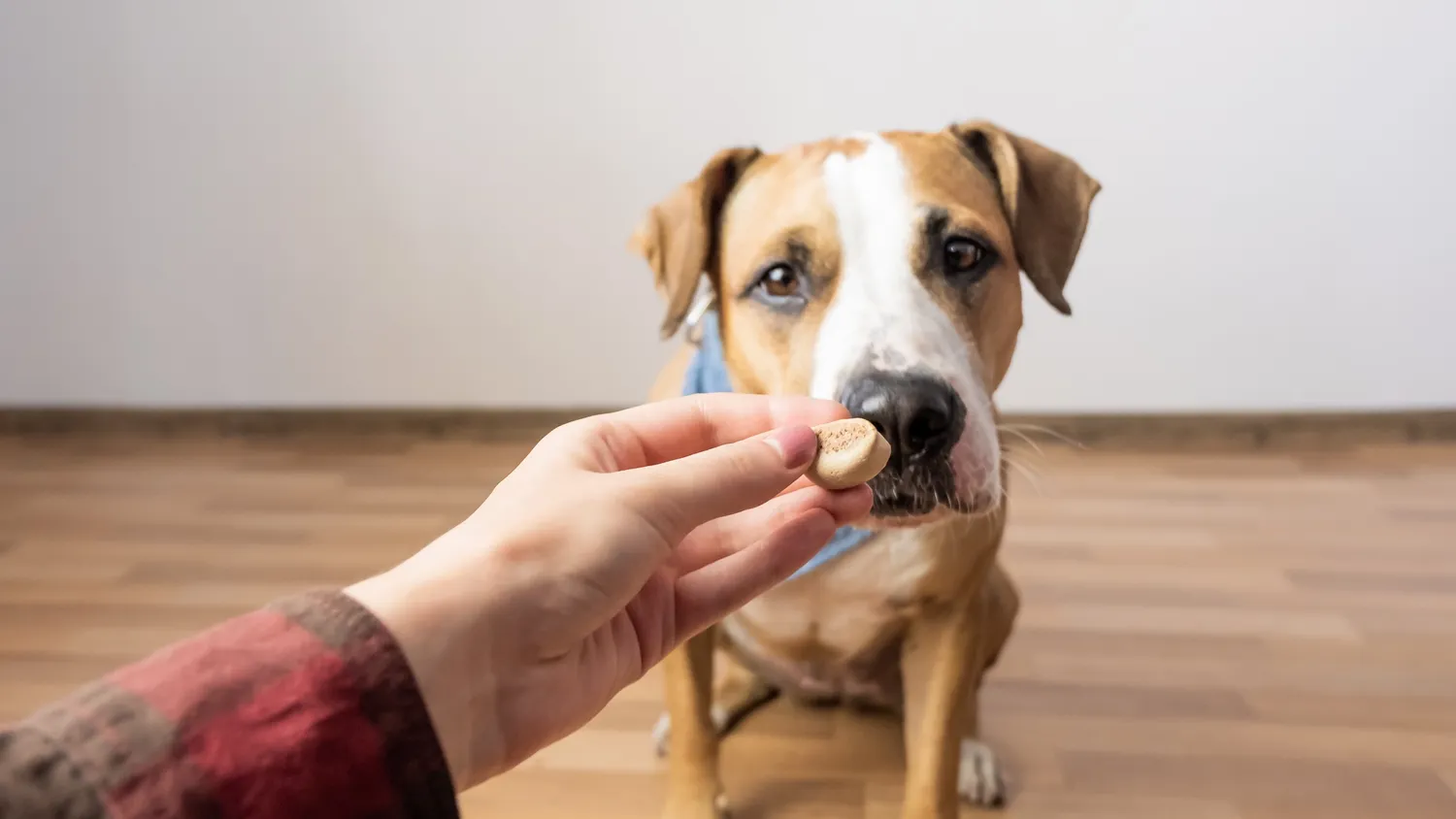
Last Updated on 2 years by Jenny Sovann
If you are here, then it is probably because you are looking for how to train your dog to walk beside you. One way or another, dogs always find a way to please us. They can be very loyal to you to the point you will always feel protected, or have a companion who will never let you go. Creating a sense of responsibility gives us purpose. We always get to use their amazing senses for tracking, hunting and even doing rescue-related work. They can perform a wide range of tasks, including being our personal therapists. Despite this without a little bit of training, things will always end up being comical.
It is always cute looking at the television and dogs walking beside people. This is something we would want to replicate with our own furry companions. Instead, our furry companions can decide to ignore our commands and do something completely different. In the beginning, it can be amusing but later on it can just lead to frustration. When you go for a walk, anything from a bird to a butterfly can grab your canine companion’s attention. While it seems harmless, if your dog decides to pursue them, they can actually end up getting lost or hurt.
How To Train Your Dog To Walk Beside You
It is important that you get your furry companion walking beside you as soon as possible. With that let’s explore how to train your dog to walk beside you.
Leash Training
The secret to making your dog walk beside you is probably what you have seen every day, a dog on a leash. This is a fundamental way in making your furry companion walk beside you. If you follow the appropriate steps, it will make the process faster. The first thing you have to do is get a leash and collar that fits and is comfortable for your dog. Getting your dog to sniff and familiarize themselves with items will make it easier for them to start accepting them. Starting off with something lightweight while gradually increasing its weight, will make your canine companion get used to it.
You can’t start learning how to swim in the middle of an ocean. Similarly, you have to start training indoors, in a quiet space where your dog is comfortable. Ensure there are minimum distractions, and keep the sessions short while gradually increasing the amount of time. As the dog starts getting used to the leash and collar, you can then start introducing distractions. When your dog starts pulling or resisting the leash, stop and wait for your canine companion to calm down before continuing. Leash training is the best way to condition your dog to walk beside you. During this process, it is important to ensure that your dog is safe.
Positive Reinforcement
It will be almost impossible to get your dog to walk on a leash or beside you, without the power of positive reinforcement. This is a sure way to motivate your dog to exhibit the desired behavior. Dogs have different personalities, so using treats, toys, or praise in a way they love is sure to get them behaving sooner. Use of high-value treats like beef, and bacon if your dog walks beside you, will make them likely to replicate the behavior.
You have to make your furry companion associate their behavior with the treat. For this, you can ensure that you give them a reward immediately when they walk beside you. Teaching them basic obedience commands like “heel” or “walk” will help your dog understand the behavior you are looking for. It is important to use a leash during this period to make it easier for your dog to understand you. You can gradually reduce the reward value, as your dog gets used to the commands. Simple praise is good enough in the end. This process will also increase the strength of your bond with your furry companion, and also increase the trust between you two.

Environments
Now that you have taught your canine companion a thing or two, it’s time to get them an internship. First practicing indoors or in your backyard, is a great way to get them familiar with walking beside you. With fewer distractions, your dog will be engaged with you and understand you better. You can then move on to a quiet park. Your dog will be focused on you while being exposed to some new stimuli. This makes it effective for your dog to finally grasp what you need him to do.
Finally, it’s time that you introduce more challenging environments. A dog park can be a great place to start. With new distractions and stimuli, your dog will have the opportunity to learn how to behave around other dogs while following your commands. You can then move to busy streets. This can be dangerous, so you have to be in control all the time. Beware of hazards and potential dangers. If your canine companion accomplishes this challenging environment, you can now go hiking. This environment will offer new smells, sights, and sounds that will be destructive. Overall, these environments will gradually improve your dog’s obedience, with the added benefits of exploring and enjoying nature.
Patience And Consistency
It is unrealistic to expect your dog to be perfect right away. Setting achievable goals, and celebrating will build on the successes over time. To increase the odds, you have to take things slowly and not rush the process. Rushing things will only make your furry companion overwhelmed and confused. Starting on a leash and progressing is the right way to go, while gradually increasing the duration and distance of training. Being patient is one way to make the experience entertaining and productive.
It will take some time for your dog to finally unlock the new skills. It is important that you do not get angry or frustrated with your dog. Dogs create positive associations, and can also create negative associations. If they create negative associations with training, then the training process will only end up being more challenging. Dogs thrive on repetition, and hence being consistent will make the sessions more likely to succeed. This can be achieved through regular practice. Overall, with patience and consistency your furry companion will finally start behaving in the desired behavior, slowly but gradually.
Professional Help
Sometimes we may not have enough time or experience to actually get our dogs to obey us. In this case, you can seek professional help to increase your chances of success. It is like taking your dog to school but for dogs. Professionals can for instance provide the regular exercise that our dog needs. Apart from this, your dog will get to socialize. A dog walker can get your dog to interact with other dogs and develop better skills, preventing behavioral issues during training.
There is the added benefit of flexibility. With a professional, the scheduling problem will be solved. This will make it easier to keep the consistency that they require to learn something. It is also wholesome knowing your canine companion will get a change of scenery all the time. Staying at the same place all day can turn out to be boring. Importantly, you will relax and have peace of mind, knowing your dog is learning how to walk with you.

Frequently Asked Questions
Are you still wondering how to train your dog to walk beside you? Here are some FAQs to better help you understand this deeper.
How do I get my dog to walk by my side?
Getting a dog to walk by your side is bound to take some time and patience. It is easier to train your dog to walk by your side if they have some leash training. You can start off with basic obedience commands and gradually increase the difficulty
How do I get my dog to stop pulling on the leash?
Using positive reinforcement, it is possible to condition your dog to stop pulling on the leash. Pulling on the leash is not only frustrating but also dangerous. Obedience commands and stopping when your dog pulls are sure to help you.
How long does it take to train a dog to stop pulling on a leash?
The time it takes for a dog to stop pulling on a leash is dependent on several factors, among them temperament, age, and breed. Consistent training with positive reinforcement will get your dog conditioned in a few weeks or even months.
What is the proper way to walk a dog?
Using a comfortable leash and collar or harness to walk your dog on the left side is the proper way. It is important to always monitor your environment to keep your dog safe from harm.
How can I teach my dog to stay focused during walks?
Using positive reinforcement and starting in a quiet area is the best way to teach your dog. You can then gradually increase the distractions and distance to ensure what you taught your dog sunk in.
Conclusion
In conclusion, it can be challenging to get your dog walking beside you. After all, dogs are independent creatures that can be mischievous at times. As amusing as their ignorance can be, it can be frustrating at other times. Following the above guide can help you get your canine companion walking beside you for weeks. First of all, with a little obedience and leash training you will have your furry friend walking with you. You can then advance and take off the leash. Eureka!, your dog will have learned to stay beside you. That is the feeling you will hopefully get by the end of this process.



